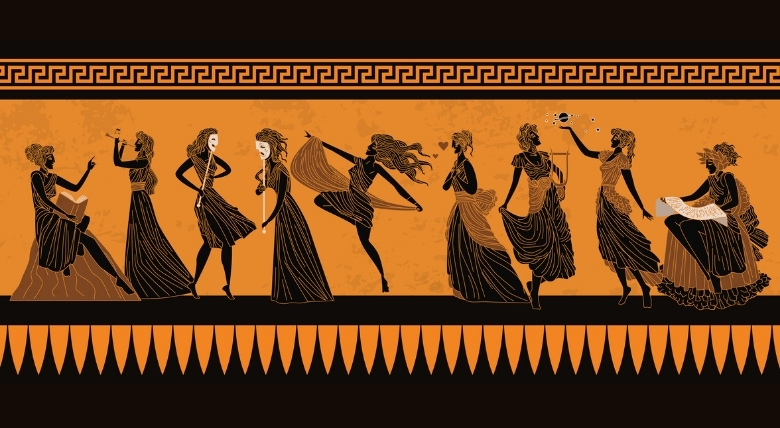WANT A-MUSING HOLIDAY EXPERIENCES COME AND EXPLORE GREECE
Most of us go on holiday hoping to find some amusement along the way. Nowhere are you better placed to do that than in Greece, home of the original classic Nine Muses that have been inspiring artists since the antiquity. They have countless paintings, drawings, designs, poems and statues dedicated to them. All artists of the Renaissance acknowledged their importance in artistic creation, dedicating their works to the Muses. In Greece they still inspire us – perhaps they will help inspire you.
As with many mythical beings, the Muses were the progeny of the mighty God Zeus and a woman he bewildered called Mnemosyne. Heaven knows why he had to bewilder her, you’d have thought hurling a few thunderbolts would have impressed most girls into dalliance. Anyway, the pair spent 9 nights together and the nine female muses were the result.
Being Godly girls, they wanted little to do with worldly affairs, preferring the arts and beauty. Apollo tutored them, taking them to Mount Elikonas, site of the original Temple of Zeus, where they invented just about everything to do with music, painting, dance etc. They must have had a brilliant kitchen disco come Friday nights after a bowl of ambrosia and an ouzo or two!
Anyway, on a cultural note we thought you might like to know who they were and what they represented. We’re not going to test you, but a basic heads-up might help the conversation flow down at Dio’s Taverna when the conversation gets academic.
Herewith some brief pen-profiles in alphabetical order:
Calliope: Muse Calliope was the superior Muse and the protector of heroic poems and rhetoric art. According to the myth, Homer asked Calliope to inspire him while writing The Iliad and The Odyssey, and, thus, Calliope is depicted holding laurels in one hand and the two Homeric poems in the other hand.
Clio: The Muse Clio discovered history and the guitar. History was named Clio in the ancient years, because it refers to “kleos” the Greek word for the heroic acts. Clio was always represented with a clarion on her right arm and a book in her left hand.
Erato: Muse Erato was the protector of Love and Romantic Poetry, and also weddings. Her name comes from the Greek word “Eros” that refers to the feeling of falling in love. She was depicted holding a lyre, a bow and love arrows.
Euterpe: Muse Euterpe discovered several musical instruments and dialectic. She was always depicted holding a flute, while many instruments were always around her.
Melpomene: The opposite of Thalia, Melpomene was the protector of Tragedy. She invented tragedy and rhetorical speech. She was depicted holding a mask of tradgedy and usually with a rather vicious looking war club..
Ourania: Muse Ourania was the protector of the celestial objects and stars; she invented astronomy. She was always depicted bearing stars, a celestial sphere and a compass.
Polymnia: Muse Polymnia was the protector of the divine hymns and mime; she invented grammar. She was depicted looking up to the sky, holding a lyre.
Terpsichore: Terpsichore was the protector of dance; she invented dances, the harp and education. She was called Terpsichore because she enjoyed dancing. ‘Terpo’ in Greek means to be amused. She was depicted wearing laurels on her head, holding a harp and dancing.
Thalia: Muse Thalia was the protector of comedy; she discovered comedy, geometry, architectural science and agriculture. She was also protector of Symposiums. She was always depicted holding a theatrical comedy mask.
What a sisterhood, eh? Put them together and you’d have the best pub-quiz team in the world, an amazing symphony orchestra and the nailed-on winner of any reality dance TV programme you care to name, all at the same time. One things for sure – there would never be a dull moment. Amusement would be guaranteed!






